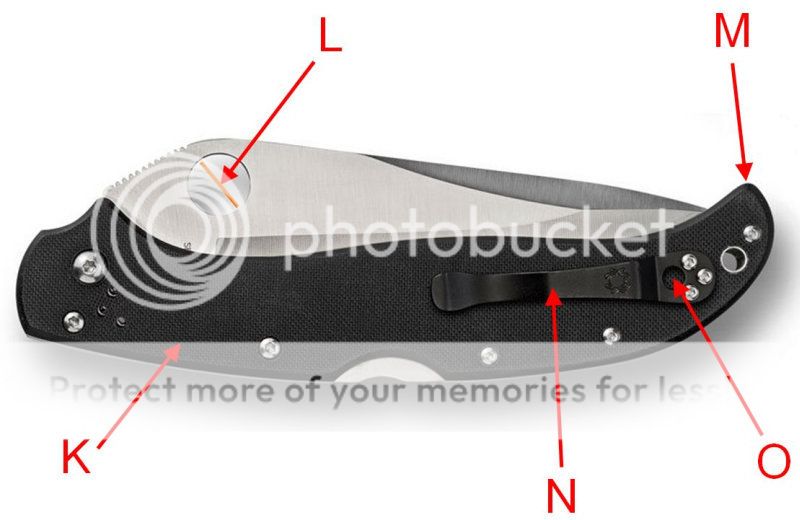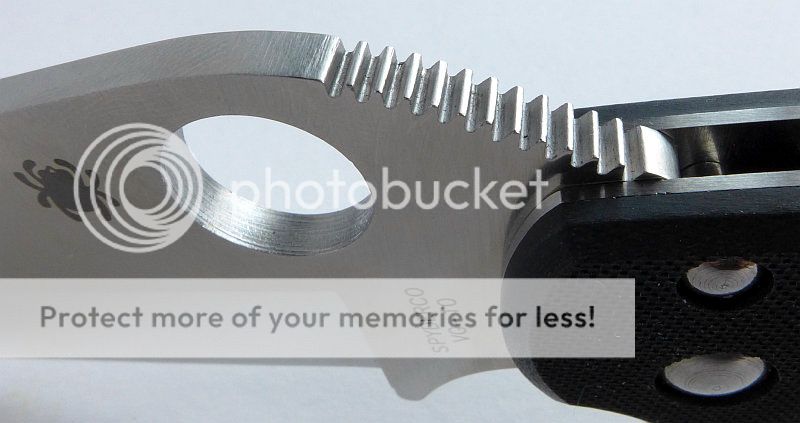- Joined
- Oct 2, 2014
- Messages
- 244
---------------------------------------------------------------------------------------------------------------------
Author's Statement for Transparency and Disclosure
The test sample/s featured in this article have been provided for technical testing and review by the manufacturer. Test samples are retained by the reviewer following publication of the completed review for the purposes of long term testing and product comparisons.
All test results published in this review are the sole work of the reviewer, and are carried out independently and without bias. Test results are reported as found, with no embellishments or alteration. Though best endeavours are made to maintain the accuracy of test equipment, the accuracy of these results is not guaranteed and is subject to the test equipment functioning correctly.
----------------------------------------------------------------------------------------------------------------------
Author's Statement for Transparency and Disclosure
The test sample/s featured in this article have been provided for technical testing and review by the manufacturer. Test samples are retained by the reviewer following publication of the completed review for the purposes of long term testing and product comparisons.
All test results published in this review are the sole work of the reviewer, and are carried out independently and without bias. Test results are reported as found, with no embellishments or alteration. Though best endeavours are made to maintain the accuracy of test equipment, the accuracy of these results is not guaranteed and is subject to the test equipment functioning correctly.
----------------------------------------------------------------------------------------------------------------------
Following so many requests for Spyderco to make a LARGE folder, Sal Glesser decided now was the right time. With a design ready for a new, strong, lock that would be just right for job (Spyderco's PowerLock), the conditions were ripe for the Tatanka to be created.

The Blade and Handle Geometry:
Most knives specifications have a basic description of the blade geometry, but in this section I will be taking a more detailed look at geometry and balance.

Using a set of gauges and precision measuring equipment including a Vernier protractor, callipers, fixed radius gauges and the unique Arc Master adjustable radius gauge (the one that looks like a crossbow).

These measurements have been tabulated and are presented along with a few reference blades (8" Chef's Knife, 5.5" Santoku and the popular Fallkniven F1).
Key aspects such as the primary bevel angle, grind type, blade depth, blade thickness, length, weight are detailed, along with balance information.
The 'Balance relative to the front of the handle' tells you if the knife will feel front heavy, or if the weight is in your hand (a positive value means the weight is forward of the front of the handle). The 'Balance relative to the centre of the handle' indicates how close to a 'neutral balance' the knife has in the hand.
In the case of full convex grinds the approximate centre of the grind is used for the primary bevel angle estimate..
The blade is made from VG10.

Explained by the Maker:
The reasons for certain design choices may not be clear when simply looking at an object, so this section is intended to give an insight into the thinking behind a design by speaking to the designer themselves.
Sal Glesser (Founder/Owner of Spyderco) very kindly squeezed in some time in his exceptionally busy schedule between the dentist and lawyer to talk with me about the Tatanka. I returned the compliment by sending over these marked up images!


Though not quoting Sal directly, the following is an explanation of how the final design was arrived at and a few insights into the Spyderco design process.
Apart from collaboration projects, almost all Spyderco knives are designed by either Sal, or Eric Glesser, or both together. In this case the Tatanka was one of Sal's projects. There are a couple of reasons for this, the first being that Sal had been getting a lot of requests for a large knife, and he had not designed many large knives. The other reason relates to the interesting new lock design.
This new lock, the PowerLock, was actually invented by one of five brothers who work at the facility making Spyderco knives in Japan. The design was shown to Sal 5 or 6 years ago, but Spyderco, who already held a patent for a similar lock (the StopLock), were too busy at the time simply keeping up with demand so could not act on it at the time. With the PowerLock being designed in Japan it was decided to have the Tatanka manufactured in the same facility by the designers of the lock.
Taking a moment to just consider the PowerLock itself, though the Tatanka is a completed project, Sal considers there to be a work-in-progress regarding this lock. The Tatanka was the first implementation of the PowerLock, as Sal wanted to challenge the lock and get it noticed by choosing to use it in a large knife, but the intention is that the PowerLock will be used in smaller knives in the future.

When looking at just how big to make this knife, Sal had to push things as he normally doesn't design folders with a blade length much over 4". Once the blade gets over 4" the handle starts to become longer than it needs to be. Once you start carrying around this extra handle, you are better off going for a fixed blade. 5" to 5 ½ " is as much handle as you need, so if the handle is much bigger it can become cumbersome. Sal selected the blade length to be as big as he could justify, and that was the 5" blade length used in the Tatanka.

Taking the blade to 5" resulted in a handle longer than he would normally feel comfortable with but it suited the size of the knife very well.
For big knives, Sal considers weight to be more of an issue than size. This is the reason for the liners in the Tatanka being skeletonised as much as possible without reducing strength where it is needed.

Sal specifically wanted to run the grind line down the centre of the blade, and to keep the tip as strong as possible the grind line was taken all the way to the tip (with the Tatanka being such a large knife, Sal expected it to be put to heavy use). This left a lot of metal above the grind line, so the long swedge was added, mostly to reduce weight, but also increases it ability to puncture.
Sal did not expect this knife to be used for skinning, so a hollow grind, which would work best for this as you only cut to about ¼" depth, was not the best choice. With strength being the primary concern a flat grind was chosen.

If you are going to do whittling or any fine cutting, your ability to get close to the edge is an advantage, but slipping onto the edge is of course a disadvantage. To give the Tatanka greater flexibility it has a finger choil.
Just to the front of the finger choil is the 'kick' which keeps the edge away from the spring and spring holder. As the Tatanka is such a long knife, the kick was made larger to decrease the chance of the finger sliding forwards, and also should the blade be snapped shut quickly or squeezed the larger kick provides more protection of the edge.

Finger choils are something that are now frequently seen on Spyderco knives. Though the idea existed earlier, when Sal was asked to design a knife to fit in between the Ladybug and Delica, he designed the Dragonfly. The only way to make a knife that was smaller but still had enough purchase for control (control of the edge is very important to Sal's designs) was to add a finger choil to the Dragonfly.
For the hole, Spyderco use sizes from 7mm up to 14mm. In a prototype for an Alaskan Iditarod knife a 16mm hole was used due to the thickness of the gloves used, but anything over 14mm when you are not wearing gloves can become difficult as your finger falls into it too much. The 14mm hole used in the Tatanka allows for use with or without gloves.
With a 14mm opening hole being used, in order to have enough metal between the hole and the grind line, it was necessary to raise the top of the blade a little.
Spyderco simply call the blade hole the "Opening hole", but as Spyderco created this feature, it is often known as the Spyder-hole.
Sal lives in the high country at about 3000m or 10000 feet so quite often he wears gloves. He spends all summer cutting wood to burn during the winter and in fact even in summer wood is burnt at night. As a lot of his usage of knives is with gloves on, when designing jimping or finger choils the use of gloves is a major consideration, and a knife like the Tatanka is often used with gloves.
The position and size of jimping is very important, as if it is too far up the blade it tears up the pocket or hand, too low and it doesn't give enough support. Various different designs were tried, and this one (which can be cut by laser) was found to do a good job.

The Tatanka has a slight negative rake to provide better control of the knife, allowing you to keep a straighter and more stable wrist.
To get to the final amount of rake (here we are referring to a dropped blade position as negative rake), once a basic design had been completed, laser cut plastic models were made and put into a lot of experienced hands to get their opinions.
These plastic models will also include the folding action and sometime working locks. During the design phase, based on the feedback, adjustments are made and a new plastic model is produced to compare and see if there is an improvement.
For the Tatanka around 6 models were made during the development process before Sal was comfortable that the ergonomics were right. For some designs this is more difficult than others, the Lil'Temperance (folder) for example took around 20+ models to get right.
Due to the design process using plastic models, the final knife's balance point is not known until the first 'hard' knife is made. The position of the balance point will not be particularly blade or handle heavy unless the intended purpose of the knife requires this. Getting this right is more a matter of overall experience in design than any specific measurement during the design phase.
The Tatanka's first 'hard' prototype worked very well and there were hardly any changes needed, but it didn't have a clip, so there was still a decision to make regarding the type of clip to use. As far as balance was concerned there was no real room for adjustment as the liners were already skeletonised and a lot had been taken out (but not so much as to compromise the overall strength). With the strong lock design, it was important not to remove any material where the strength was required, and in the case of the PowerLock, it is not the lock that usually fails, but one of the pins or the tang.
The liners are also heat treated, paying particular attention not to introduce any brittleness and leave the liner strong enough to hold a clip screw and tough enough so it doesn't easily bend, but not so hard it will crack.
Last edited:



















